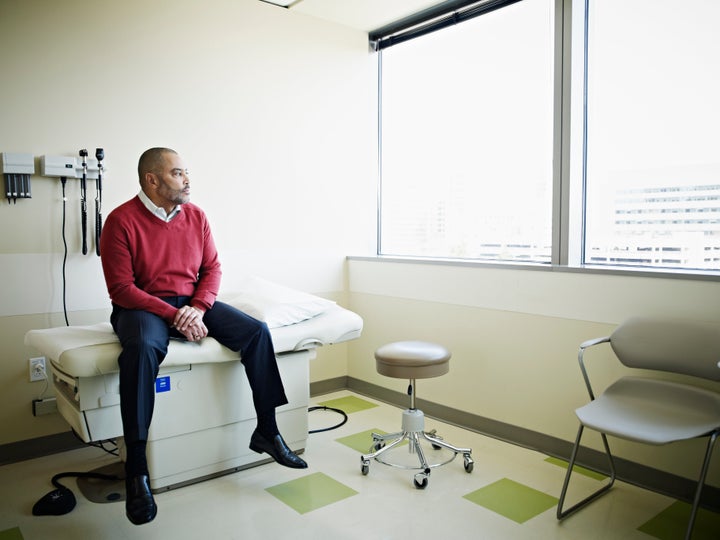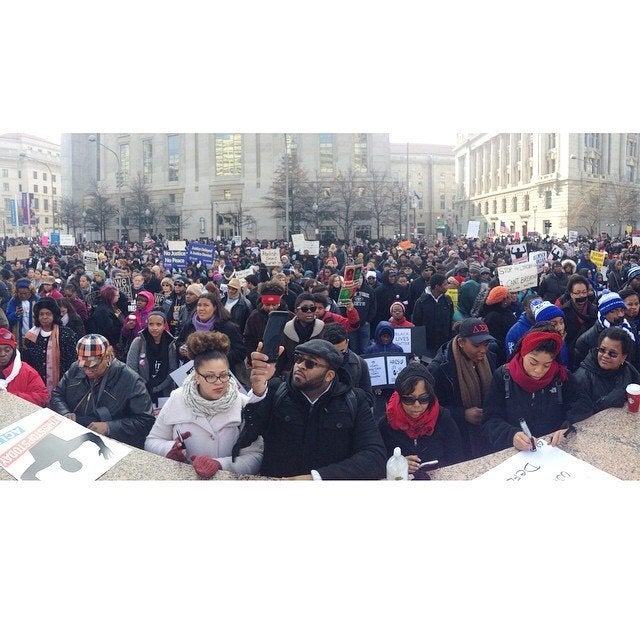
While black Americans still face worse health outcomes and suffer earlier mortality than white Americans, a new report from the U.S. Department of Health and Human Services states that the life expectancy gap between blacks and whites is narrowing.
“Blacks are catching up,” Samuel Preston, a demographer at the University of Pennsylvania, told The New York Times. “The gap is now the narrowest it has been since the beginning of the 20th century, and that’s really good news.”
As it stands, black Americans can expect to live until age 76, while white Americans are likely to live until age 79, on average.
There's no one factor responsible for African-American longevity gains, but a constellation of public health initiatives seems to have had an effect. There's also plenty of room for improvement in the wake of the 1980s and 90s, when deaths from homicides, AIDS and the crack epidemic drove down overall life expectancy for African-Americans as a group.
The black community is living longer...
Health gains in the black community are mostly responsible for the narrowing gap, according to the report's authors. They found that infant morality, teen pregnancy and smoking rates have all fallen since the early aughts, although those numbers still lag behind the infant mortality, teen pregnancy and smoking rates for white Americans.
And despite headlines that suggest the opposite, homicide has fallen significantly among black men, from a high of 78 homicides per 100,000 residents in 1970 to 31 homicides per 100,000 residents in 2014, the least violent year on record.
A different report -- a working paper the National Bureau of Economic Research released this month -- highlighted massive mortality declines for African-American men between 1990 and 2010, and also found improvement in mortality rates for all young people during the same period.
...While the white community faces earlier mortality
On its face, the newly narrowed 3.4-years black-white longevity gap is a good thing, but the fact that it's partly driven by the opioid epidemic that disproportionately affects white Americans makes it difficult to deem the announcement an outright overall public health success story. Since 1998, mortality rates for middle-aged whites have climbed, a phenomenon attributed to higher suicide, drug overdose and alcohol complication rates, and the increase has slightly pushed down the average life expectancy for whites.
Rising death rates for middle-age white women is both subject of a Washington Post investigative series this year and the focus of a widely publicized study published last year in the Proceedings of the National Academy of Sciences. Some, however, think the focus on the increasing mortality among white women misses the point.
“What’s going on for black men ought to be a much bigger story than what’s going on for white women. The changes going on for black men affect many, many more lives.”
- Janet Currie, director of Princeton University's Center for Health and Well Being
"Middle-aged white women had the lowest mortality rates of anybody, so it doesn’t take a lot to get a big increase in mortality rates,” Janet Currie, director of Princeton University's Center for Health and Well Being and leady study author of the NBER report, told Pacific Standard. “What’s going on for black men ought to be a much bigger story than what’s going on for white women. The changes going on for black men affect many, many more lives.”
Poverty and racism work together to hurt African-American health
For black Americans, it's not just lack of access to care and poverty that can negatively impact health. There's also an undercurrent of racial inequality, both in the health care system as well as in day-to-day life, that undercuts equality in public health efforts.
“Layered on top of those social class inequities are racial inequities,” Dr. M. Norman Oliver, director of the University of Virginia Center on Health Disparities, previously told HuffPost. “While a poor, working-class white or a poor Appalachian white might have the same poor health standards as folks in inner-city Baltimore, the population attributable risk of being in that poor status is much higher in the African-American community. That’s a result of that racist discrimination being layered on top of the class inequities that we have.”
Paradoxically, there's some evidence that racism has effectively protected black Americans from the opioid epidemic that's ravaging white America. A study published in the journal Medical Care found that doctors were 22 percent less likely to prescribe pain killers to black and Hispanic patients who presented with the same symptoms as white patients in the emergency room.
Doctors who operated under the false assumption that minority patients would be more likely to sell or become addicted to opioids were less likely to prescribe the drugs to minorities, according to Dr. Andrew Kolodny, chief medical officer for Phoenix House Foundation, a nonprofit drug and alcohol rehabilitation organization.
"Racial stereotypes are protecting these patients from the addiction epidemic,” Kolodny told the New York Times.
Only sustained change will eliminate the mortality gap
In order to eliminate the mortality gap, policymakers and health care providers need to focus on identifying and replicating successful initiatives for continued improvement.
One effort, outlined in a 2014 New England Journal of Medicine study, found that hospitals that were required to report quality of care reduced racial disparities in 17 categories, including heart attacks, heart failures and pneumonia, between 2005 and 2010.
More recently, the Affordable Care Act took a dent out of the nation's uninsured minority population, insuring 2.3 million previously uninsured African-Americans between the ages of 18 and 64, according to the U.S. Department of Health and Human Services.
“The emphasis on the negative trends can send the message that there’s nothing we can do,” Currie told Pacific Standard. “[Health outcomes] are very much dependent on policy. Different kind of health policies that are implemented can have a big effect.”
As for white Americans, there's no end in sight to the opioid addiction crisis. Twenty-five million adults struggle with pain on a daily basis, amounting to what's essentially a silent epidemic. Americans are pouring their wages into treatment, spending $300 billion on pain relief each year, according to Consumer Reports, and many of those Americans slide from legitimate opioid use to misuse. A full 2.1 million Americans suffer from substance use disorders related to prescription opioids and almost 500,000 are addicted to heroin, according to the National Institute on Drug Abuse.
While there have been public health efforts to curb the epidemic, such as the creation of controlled substances registries to identify doctor-shopping patients and promoting more widespread distribution of Narcan, the opioid overdose reversal antidote, these efforts don't attack the root of the epidemic: addiction.
Once again, the conversation circles back to inequality. “Poverty and stress, for example, are risk factors for misuse of prescription narcotics,” Mark Hayward, a professor of sociology at the University of Texas at Austin, told the Times.
